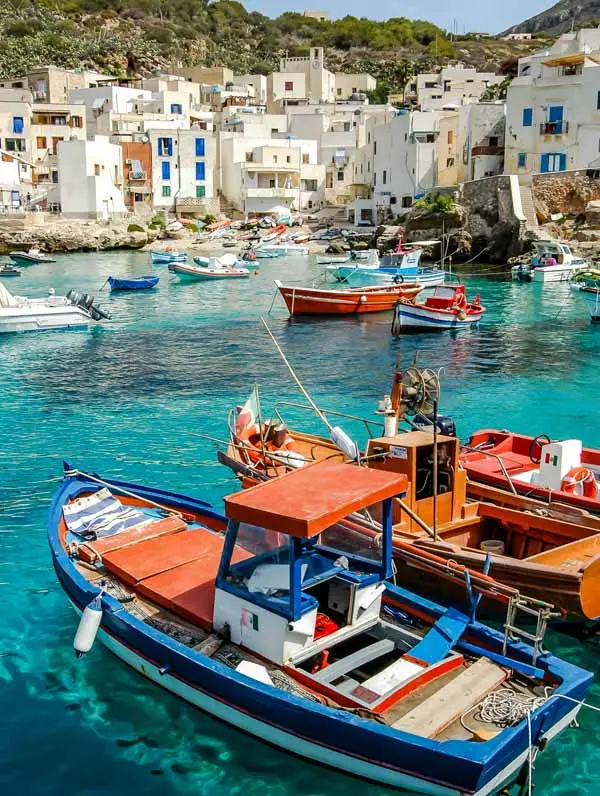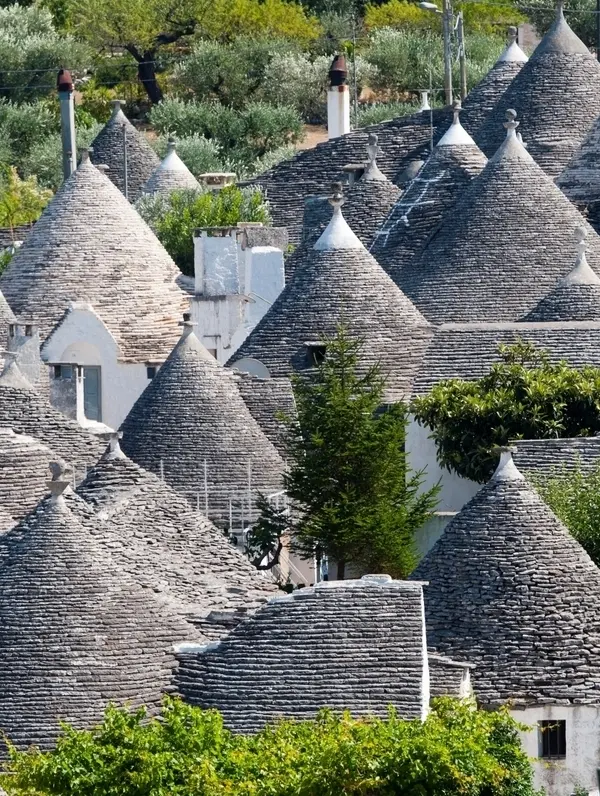Widespread in western Sicily, the indigenous Grillo (GREE-loh) grape is a key component in the production of Marsala wines. When vinified in purity, it can produce very interesting white wines with good acidity, high alcohol and balanced softness. White wines do not usually age well, however Grillo is able to age up to five years. This grape's ascent to prominence is a narrative that resonates with those who seek not just a drink, but an experience steeped in culture and history. And whether savored in the bustling streets of London or amidst the tranquility of the countryside, Grillo offers a sip of Sicilian sunshine, promising a journey of discovery with every glass.
Primary Flavors
Black pepper
Melon
Orange blossom
Citrusy fruit
Green tea
Grape Profile
ACIDITY: Well Balanced in Acidity
BODY: Balanced in Weight and Complexity
SUGAR: Completely Dry, No Residual Sugar
LEVEL OF ALCOHOL: Fairly Strong (12-14%)
Handling
Serve 10-12°C
Decant No
Glass Type Chardonnay Glass
Period open3-5 days
Cellar Up to 5 Years
Our Top selection
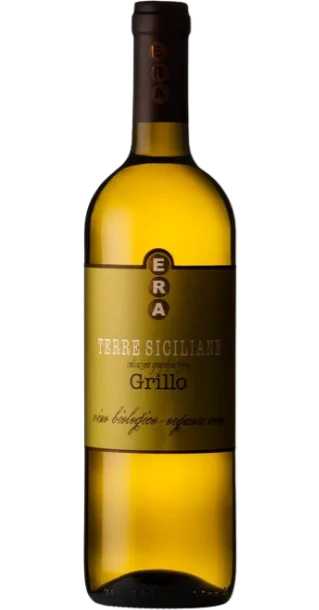
Era Grillo Organic
Organically certified. Stony Calcareous soil. 12-hour skin maceration, fermented and aged in stainless steel 3-4 months, plus 3 months in bottle.
Read more
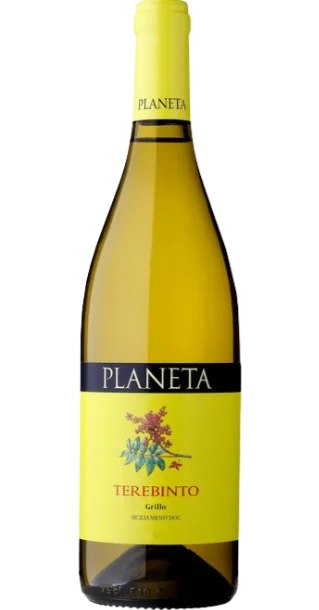
Terebinto Grillo
Aromatic white, notes of apricot, tropical fruits like lychee and pineapple. Fresh and textured.
Read more
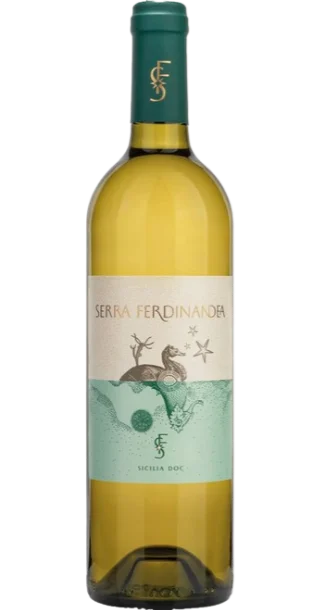
Bianco
Sunny yellow, green highlights. Acacia, camomile, honey, nut bouquet. Balanced wood, fresh minerality, and a long finish.
Read more
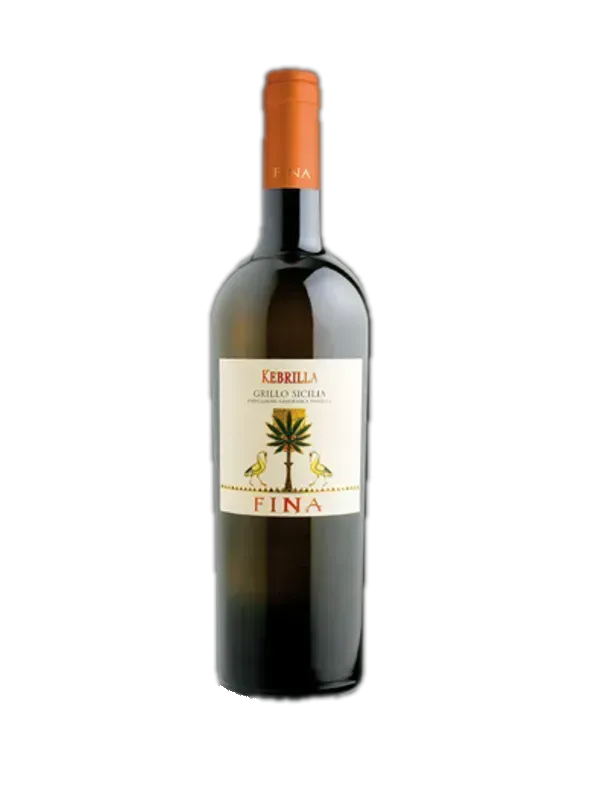
Fina Kebrilla Grillo
Sicilian white, savory with coastal influences, hints of citrus, floral elegance, perfect with seafood, cheese, light pasta.
Read more
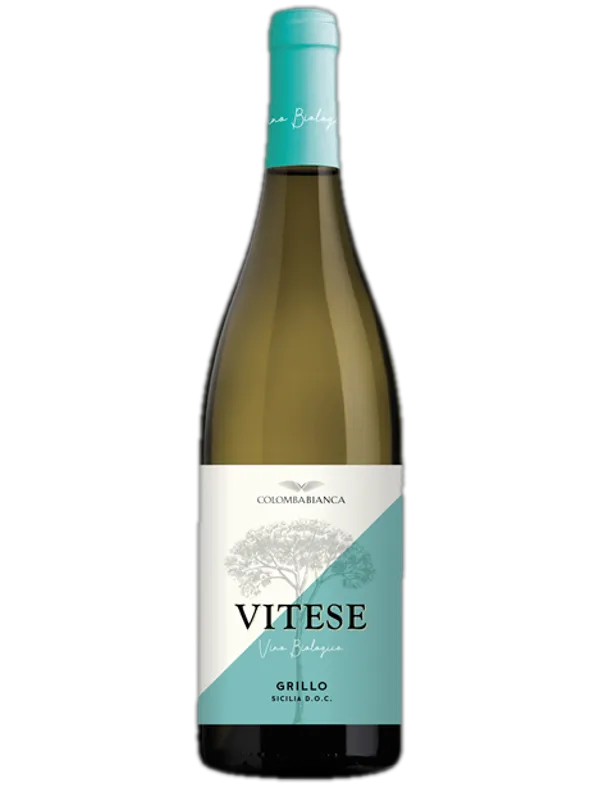
Colomba Bianca, Vitese, Sicily, Grillo
Aromatic, floral, with stone fruit, grapey notes, and a zesty lime, white pepper finish.
Read more
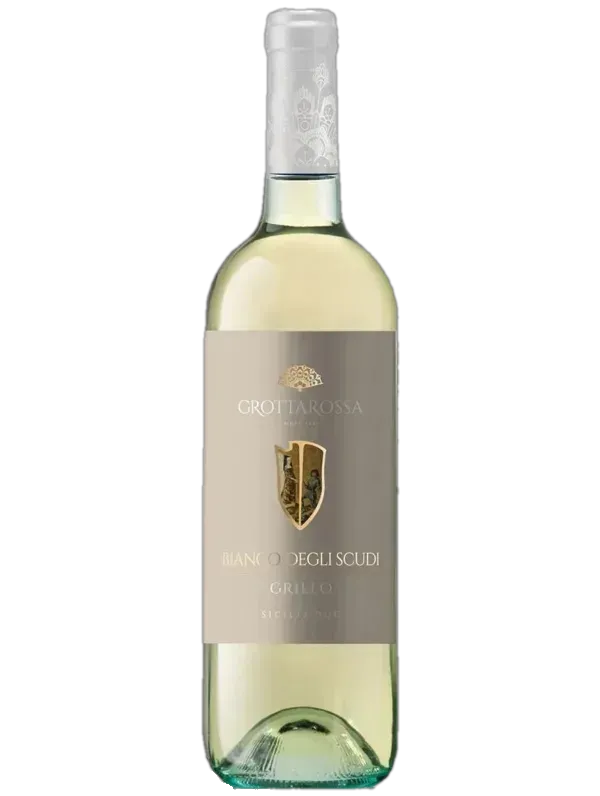
Grillo Sicilia DOC Grottarossa
Straw-yellow hue, floral jasmine, green pepper, citrus, and exotic fruits, reflecting in taste.
Read more
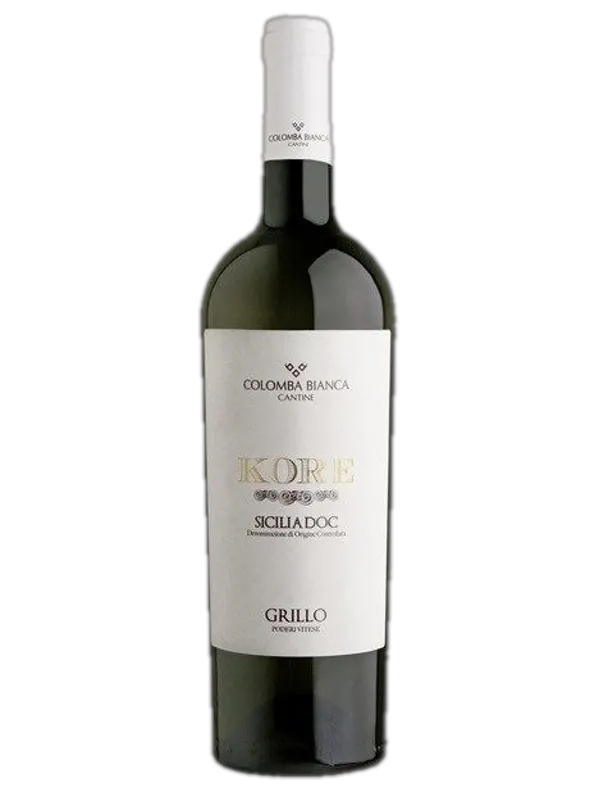
Colomba Bianca, Kore, Sicily, Grillo
Sun-soaked Sicilian white, quince and spice aromas, vibrant with a bitter lemon finish.
Read more
Grillo Regions
Food Parings

Starter: Scallops au gratin
A sublime holiday appetizer, this dish is fragrant, elegant and easy to prepare.

Main course: Prawn and courgette spaghetti
An evergreen pasta recipe that is perfect for summer. Delicate and tasty. A guaranteed success.

Second course: Baked sea bream
A classic second course of great taste and nutritional quality that does not require laborious cooking, just fresh ingredients.

Dessert: Lemon Sorbet with Fresh Mint
A zesty and refreshing end to your meal, lemon sorbet with a hint of fresh mint complements Grillo's crisp acidity and citrus notes beautifully.
Grillo is a surprisingly versatile wine. Thanks to its freshness, it goes well with fish-based dishes, typical of the Sicilian culinary tradition. It pairs perfectly with fish soups, as well as fried, baked or grilled fish. Grillo wines can be combined with seafood appetizers and they also have the right characteristics to enhance white meat dishes. Pairing possibilities we like to highlight are: vegetarian lasagne, cured meats, and medium-hard cheeses with a short maturation.
Want to know it all?
Wines made from Grillo
Dry wines
Grillo grapes can be vinified in purity or in blend, and can make still or sparkling wines. Such wines are characterised by heterogeneous aromas. They are soft and warm in the mouth, a great companion for all fish preparations.
Fortified wines
Grillo plays a key role in the Marsala Oro and Ambra blends, creating rich and complex fortified wines with a centuries-old tradition that can be dry, semi-dry,sweet and has a good longevity.
Passito wines
The best example is probably the Sambuca di Sicilia Passito, from the province of Agrigento, produced from a blend of Ansonica and Grillo. The passito versions show intense aromas of dried fruit and a warm and sweet taste.
History of Grillo
It is said that Grillo originated in Puglia, and was brought to Sicily after the invasion of phylloxera, an insect that destroys grapevines by ruining their roots. Initially present in the Marsala area, Grillo grapes quickly spread all over the island, thanks to their suitability to the hot Sicilian climate. Recent studies have shown that this vine fruit is likely to have resulted from a blend between Catarratto and Zibibbo.
For decades, Grillo had a poor reputation as a blending wine, but today the picture is radically different and this grape variety is experiencing a new popularity. This has been favoured by modern winemaking techniques, that allow the wine to maintain the fragrance and cleanliness of its fruit, without the alcohol excesses related to over-ripening.
Grillo Primary Flavours
Dive into a glass of Grillo and you're immediately whisked away to a sensory soiree. The forefront is dominated by the refreshing notes of melon, offering a juicy sweetness that feels both ripe and inviting.
Melon
Orange Blossom
Citrusy Fruit
Green Tea
This is soon complemented by the delicate, fragrant whispers of orange blossom, evoking the allure of Sicilian orchards in full bloom. As the melody continues, lively hits of citrusy fruit bring a zesty kick, reminiscent of sun-kissed lemons and oranges, ensuring your palate is awake and intrigued. To round off this taste adventure, subtle undertones of green tea emerge, providing a gentle bitterness and an earthy depth, akin to a cool breeze after a warm Mediterranean day. Grillo's ensemble of flavours dances harmoniously, promising a taste experience that's both refreshing and profound.
Handling of Grillo
Serving temperature
10-12°CGlass type
Chardonnay GlassSuggested time in Decanter
Not neededLasting period once open
3-5 daysStoring time in the cellar
Up to 5 years
Grillo wines excel at a serving temperature of 10-12°C. This slightly chilled temperature range helps to maintain the aromatic freshness and crispness of the wine, making it more enjoyable. It's cool enough to refresh but not so cold as to suppress the delicate aromas and flavors that Grillo is known for.
A Chardonnay glass, with its wider bowl, is ideal for serving Grillo. This type of glass allows the wine to breathe and fully express its bouquet, which can include notes of citrus, herbs, and floral undertones. The shape also ensures that the wine is directed to the center of the tongue, balancing the fruit acidity and bringing out the full range of flavors.
Decanting is generally not needed for Grillo. This wine is appreciated for its youthful and vibrant qualities, which are best experienced without the aeration that decanting provides. Enjoying Grillo in its purest and freshest form allows you to savor the characteristics that define this varietal.
After opening, a bottle of Grillo can remain enjoyable for 3-5 days if properly re-sealed and stored in a cool, dark place. This longevity is due to its sturdy structure and acidity levels. However, for the best taste experience, it's recommended to consume it within a couple of days.
While Grillo is often enjoyed young, it has the potential to age gracefully for up to 5 years in the cellar. This aging potential allows the wine's complexity to develop further, often leading to a deeper and more nuanced flavor profile. It's important to store the bottles in a controlled environment, away from light and at a consistent temperature to ensure optimal aging.
By considering these handling tips, enthusiasts of Grillo wines in the UK and beyond can maximize their enjoyment of this unique and flavorful wine. Whether enjoying a glass on a warm evening or pairing it with a favorite dish, understanding the nuances of serving, storing, and enjoying Grillo can greatly enhance the overall experience.
Consumer info
Offering a delightful balance of freshness and complexity, it has found a niche amongst UK wine enthusiasts seeking something a tad different.
Price Averages in the UK
Grillo wines are typically a great bang for your buck. On average, you can expect to pay anywhere from £8 to £20 for a decent bottle, though some premium selections may reach a slightly higher bracket.
Pasta Pairing
Grillo's zesty undertones make it a splendid companion for pasta dishes, especially those featuring seafood or zesty lemon and herb sauces. A classic spaghetti alle vongole or a linguine al limone would be a match made in heaven.
Risotto & Rice Pairing
Risotto with saffron or a fresh spring vegetable risotto will harmonise well with Grillo's nuanced flavour profile.
Meat Pairing
Lean white meats, such as chicken or turkey, cooked with Mediterranean herbs are a safe bet. Think of dishes like rosemary roasted chicken.
Fish Pairing
Grillo and seafood are an age-old pairing. Opt for grilled fish, especially sea bass or seabream, to complement its crisp and minerally notes.
Cheese Pairing
Soft to medium cheeses, especially those with a bit of tang like feta or a fresh goat cheese, accentuate Grillo's unique flavour palette.
Top 3 Cuisines
Given its Mediterranean roots, Grillo naturally pairs well with Italian fare. However, it's also an excellent choice with Spanish tapas or even some Greek mezze dishes, given the shared emphasis on fresh ingredients and bold flavours.
Incorporating Grillo into your wine rotation promises a delightful culinary journey, with pairings that cater to a variety of palates and dishes.
Final overview
Literally translated as ‘cricket’, Grillo is a Sicilian white wine with great potential, an intense tie with its land and an increasing popularity among consumers all over the world.
FAQS
What kind of wine is Grillo?
It is difficult to identify just one kind of Grillo wine. Grillo can produce a wide range of wines; aromatic dry whites with a good acidity, sweet passitos or intense and rich fortified wines, such as the famous Marsala.
What does Grillo taste like?
Vinified in purity (meaning single-varietal wines), Grillo can produce fragrant wines of great organoleptic structure. The perfume, distinctly floral, can show hints of melon, but also pear, tea weeds, nettle leaves and dried flowers. On the palate, Grillo wines are warm, very balanced and harmonious with their dry and slightly astringent taste.
Is Grillo dry or sweet?
Grillo produces excellent dry wines. Nonetheless this grape can be used in blends both for dry, fortified and delicious sweet wines.
Where is Grillo produced?
Grillo is grown in Southern Italy, on the island of Sicily and in the regions of Puglia and Basilicata. In Sicily, it is widespread throughout the entire territory, but it is mostly produced in the western side, in the provinces of Trapani, Agrigento and Palermo.
What should I eat with Grillo?
Grillo wines are characterised by a wonderful fragrance and an aromaticity that make them exemplary pairings for a long list of foods. From shellfish and seafood appetisers, to first and second courses based on fish and vegetables. Grillo can be matched with fried crustaceans, white meats, eggs and salami.
How do you pronounce 'Grillo'?
Grillo is pronounced as [ˈɡrɪl.lo]. In a simplified form, it sounds like "GREE-lo." The emphasis is on the first syllable, with a rolled 'r' and a clear 'o' sound at the end.

